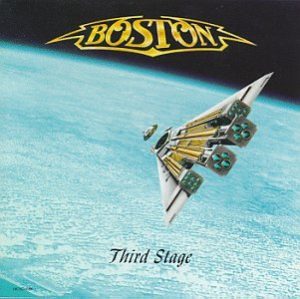As a nerdy adolescent boy growing up in Baton Rouge, Louisiana I discovered that I really loved computers – and computer software in particular. Creating something from nothing and instantly seeing the results in all their black-and-green, 64 column-by-16 line, ASCII-character glory gave me a level of satisfaction very few other things did.
While I was the last kid picked for sports teams in junior-high school PE class (behind the girls – and I’m not exaggerating), put a keyboard in front of me and I could do things few others could. I dreamed of one day living and working in Silicon Valley – helping to create the technology that brought much joy to my life. Fast forward about twenty-five years, and I am living the dream. I can remember like it was yesterday the first time I drove down Interstate 280 in Cupertino and saw the Apple campus out the driver’s side window; then looped up highway 85 and down 101 to see Intel’s headquarters. I consider myself one of the luckiest guys alive. I get paid to do what I truly love doing – creating great software and building great software companies that allow others to do the same. Over the course of my career, I’ve been fortunate to directly participate in two fundamental shifts in computing technology. The first was the transition from mini- to micro-computing. Although I logged my fair share of VAX and Data General Eclipse time, I joined the fray in earnest as microcomputers were already entering the scene. I was less a creator, and more a participant in and beneficiary of that transition. The shift from character-based to GUI-based user interfaces; the emergence of PC LANs and networked storage; the adoption of object-oriented design and programming languages; the emergence of client-server and subsequent shift to n-tier application architectures; and the proliferation of virtual machine software for Intel-architecture platforms were all what I would consider evolutionary steps in computing technology. Very cool stuff – enjoyed helping drive those transitions – but evolutionary. The second fundamental shift was the emergence of the Internet, enabling global connectivity of computing devices through simple, open network protocols; and the establishment of the World Wide Web which rides on top. Having made the utterly ridiculous decisions to return to graduate business school and to pursue a sideshow career in investment banking just as all that good stuff was going down, I was once again more participant than instigator. Hindsight is 20-20, I suppose. But a third major shift is happening; a shift that will mark the third stage of my career. And I’m not missing this one. Fortunately, I’ve been at the right place, at the right time, to help play a leadership role in driving this transition. The emergence of “cloud computing” will be bigger and more impactful
on the computing landscape than all the previous transitions above combined. As a jaded, buzz word overloaded, skeptical, long-term member of this community, I actually believe that assertion right down to my core. In 2004 I started a company, with Xun Wilson Huang, called Akimbi Systems. Acquired in 2006 by VMware (where I remained for a couple years), the technology we built is now being used as the foundation of VMware’s cloud provisioning platform. Virtualization (server, storage and networking) is a key enabling technology making the drive to cloud computing possible, but there are other, key missing ingredients – mostly “up the stack.” About a month ago I joined the team here at NorthScale to help build and bring to market some of those missing ingredients; and to help enterprise IT organizations understand and embrace the cloud computing model. I’ve been preparing my whole life for this opportunity and we are going to do it right. We aren’t yet ready to fully detail our vision, strategy and products to the market, but we are doing some pretty amazing things here and we can’t wait to tell the world. “but thats not what I came to tell you about. Came to talk about the draft.” The development of critical infrastructure software using the open source model is the future, and increasingly the present, of software development. We plan to embrace and actively support a number of open source projects in our work here at NorthScale, and memcached is one of them. We believe deeply in the power of the open source software development model and we are going to do everything in our power to respect, support, contribute back to and enhance the vitality of the memcached community; and the same goes for any other project we participate in. The memcached community deserves credit for creating and enhancing a software system that is currently used by thousands of web applications, including substantially all of the top 20 web applications (by traffic count) on this planet (including Facebook, MySpace, New York Times, Google, Yahoo!, LinkedIn, Craigslist, eBay, salesforce.com). Rather than try to co-opt or claim credit for the work of the community, our goal is to recognize that great work; and to continue to do our part to support the efforts of these people while helping to improve the software and contribute those improvements right back to the project. It is the right thing to do. I can’t wait to share my experiences with you in the coming months and years and I’d love to hear from anyone that shares our passion for cloud computing and open source software development.

